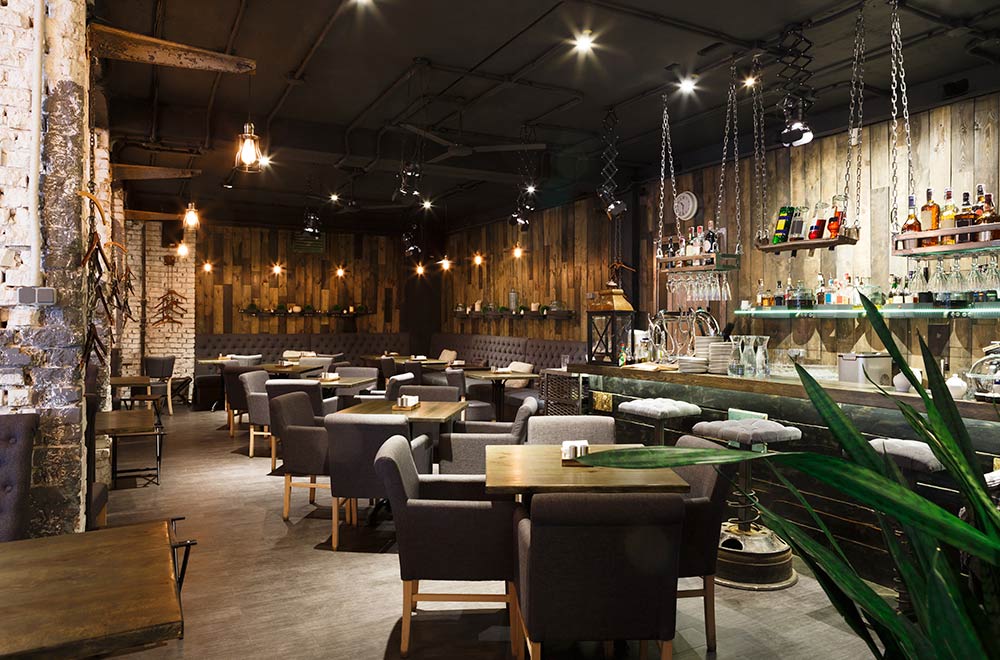Savor Authentic Eastern Cuisine With a Pan-Asian Twist for a Culinary Adventure
Starting a cooking journey via genuine Asian cuisine, improved with a Pan-Asian spin, provides an unique chance to check out the rich tapestry of flavors that define the region's varied culinary customs. This experience welcomes you to savor the splendid equilibrium of tastes-- pleasant, salted, spicy, and sour-- integrated by fragrant natural herbs and spices. Imagine the ingenious blend of Thai curry and ramen or the unexpected delight of sushi burritos. As you contemplate these tempting dishes, consider the cultural narratives and historical impacts that shape them, each bite providing a tale waiting to be uncovered.

Checking Out Pan-Asian Flavors
In the realm of international gastronomy, Pan-Asian cuisine stands apart for its remarkable variety and the unified interaction of flavors from different Eastern societies. This cooking approach commemorates the one-of-a-kind ingredients and rich customs discovered across the continent, developing a tapestry of preferences that is both satisfying and fascinating. Secret to Pan-Asian cuisine is its capacity to balance contrasting tastes-- sweet, salty, spicy, and sour-- while highlighting the freshness and high quality of each ingredient.
From the umami-rich soy sauce of Japan to the fiery chili peppers of Thailand, Pan-Asian food supplies an extensive scheme of tastes. These components are typically combined in inventive methods, improving recipes with layers of intricacy. For circumstances, making use of great smelling natural herbs such as lemongrass and cilantro, usual in Vietnamese and Thai food, includes a revitalizing illumination to dishes, while the unification of coconut milk provides a creamy, rich texture.
The focus on fresh fruit and vegetables and aromatic seasonings makes sure that each dish is not only a banquet for the taste but likewise for the detects. Pan-Asian cuisine invites diners to get started on a cooking journey, exploring the vast and varied landscapes of Eastern gastronomy with every bite.
Combination Recipes to Try
While Pan-Asian food is celebrated for its typical tastes, the modern-day culinary landscape is increasingly embracing combination meals that mix these traditional aspects with impacts from other regions. This cutting-edge method not only honors the abundant heritage of Oriental cooking arts yet also introduces novel taste experiences that interest modern tastes.
An archetype of such a fusion dish is the Korean-Mexican taco, where marinaded bulgogi beef is covered in a warm tortilla, covered with kimchi and a hot gochujang-infused salsa. This mix marries the strong, savory flavors of Korea with the lively, fresh components of Mexican food. Likewise, sushi burritos have acquired popularity, joining together the delicate artistry of Japanese sushi with the passionate, hand-held convenience of a burrito, commonly featuring blend components like tempura shrimp and avocado with a drizzle of wasabi mayo.
Another significant dish is Thai curry ramen, which infuses the creamy, fragrant flavors of Thai curry into the reassuring broth of conventional Japanese ramen, creating an unified mix that tantalizes the detects. These combination recipes prolong beyond simple uniqueness; they stand for a cooking dialogue between cultures, urging exploration and development on the planet of Pan-Asian cuisine.
Necessary Active Ingredients and Spices
To truly appreciate Pan-Asian food, one should understand the crucial ingredients and spices that develop its foundation. This diverse cooking design attracts from a rich tapestry of Eastern customs, employing a harmonious mix of flavors and appearances. Key components consist of soy sauce, fish sauce, and oyster sauce, which give a savory umami depth vital to Asian recipes. Corresponding to these are rice vinegar and mirin, offering a fragile level of acidity and sweetness.
Fragrant aspects are pivotal, with ginger, lemongrass, and garlic being ubiquitous across different Pan-Asian dishes. These ingredients supply a fragrant base that enhances the intricacy of flavors. Seasonings such as celebrity anise, cardamom, and cinnamon present heat and personality, resembling impacts from areas like China and India.

Food Preparation Strategies and Tips
Grasping the art of Pan-Asian cuisine calls for experience with its distinctive cooking strategies, each adding to the dynamic tapestry of flavors this culinary tradition is celebrated for. Central to these methods is the stir-fry, a rapid cooking strategy that maintains the nutritional integrity and brilliant shades of active ingredients. Utilizing a frying pan, the stir-fry method permits even warm distribution, vital for achieving the particular texture and taste balance of Pan-Asian recipes.
An additional essential technique is steaming, specifically prevalent in Chinese food. This gentle method keeps the natural tastes and nutrients of components, making it perfect for seafood and veggies. Dumplings, a cherished staple, typically gain from steaming, leading to soft, succulent textures.
Cooking, likewise indispensable, passes on great smoky depths to dishes such as Korean bulgogi or Japanese yakitori (Romantic restaurants Islamabad). This method frequently involves marinading active ingredients, permitting flavors to pass through deeply before cooking over an open flame or warmer
Finally, mastering the art of stabilizing flavors-- wonderful, sour, salty, bitter, and umami-- is crucial. Effectively layering these components can elevate a recipe from regular to amazing, supplying a complex and pleasing culinary experience that embodies the essence of Pan-Asian food.
Dining Experiences Worldwide
Throughout the world, Pan-Asian food provides an unequaled eating experience, commemorated for its rich tapestry of tastes and lively discussions. This culinary phenomenon has actually transcended cultural boundaries, catching the hearts and palates of food lovers worldwide. In multicultural cities fresh York, London, and Sydney, Pan-Asian dining establishments function as fusions where cooking traditions from Thailand, Japan, China, and beyond converge, providing diners with a diverse mix of meals that highlight the area's diversity.
The worldwide allure of Pan-Asian food depends on its ability to use both credibility and technology. Cooks skillfully wed traditional ingredients such as lemongrass, soy sauce, and miso with modern strategies, resulting in recipes that are both refreshingly brand-new and acquainted. This fusion permits restaurants to get started on a culinary trip that values heritage while welcoming modernity.
Furthermore, eating experiences are boosted through thoughtfully made atmospheres that show the principles of Pan-Asian visual appeals. From minimalist Japanese-inspired insides to vibrant Thai-themed areas, each dining establishment uses an one-of-a-kind atmosphere that matches the cooking offerings. Consequently, clients are not merely eating a meal but partaking in a social experience, making Pan-Asian eating a genuinely global sensation.
Verdict
The exploration of Pan-Asian food offers an extensive understanding of the complex interaction of tastes and culinary traditions throughout Asia. By embracing fusion meals such as Thai curry ramen and sushi burritos, the culinary trip not only highlights the flexibility of conventional active ingredients however also showcases cutting-edge modern-day techniques. This gastronomic journey, enhanced by cooking approaches and essential flavors, offers a special possibility to appreciate the multiculturalism and cooking artistry that define Pan-Asian cuisine on a worldwide range.
Beginning on a culinary trip through authentic Eastern food, boosted with a Pan-Asian spin, provides a special chance to explore the rich tapestry of tastes that define the region's varied cooking practices.In the realm of worldwide gastronomy, Pan-Asian cuisine check here stands out for its amazing variety and the harmonious interplay of flavors from different Oriental cultures. Trick to Pan-Asian cuisine is try this its capability to stabilize different flavors-- sweet, salty, spicy, and sour-- while highlighting the quality and top quality of each ingredient.
